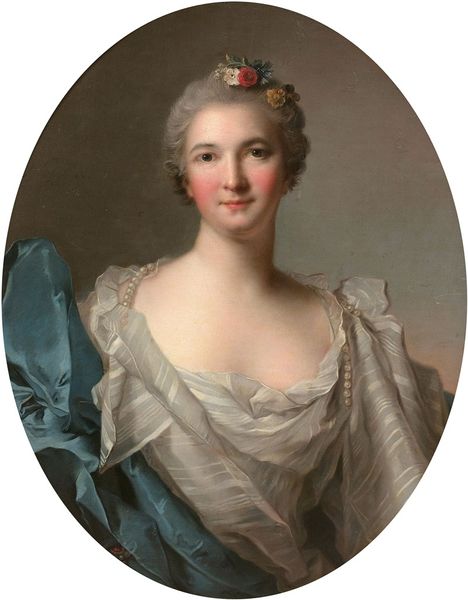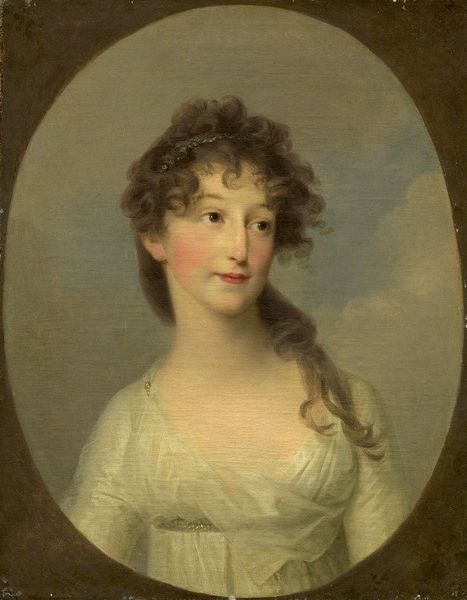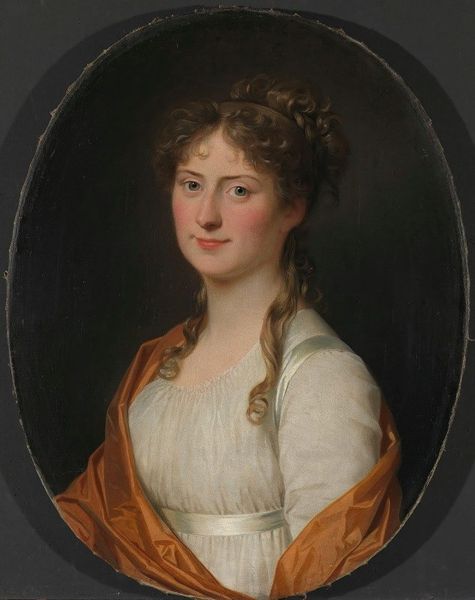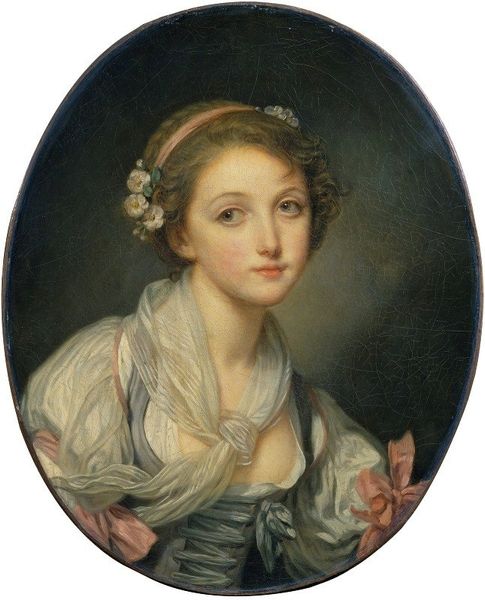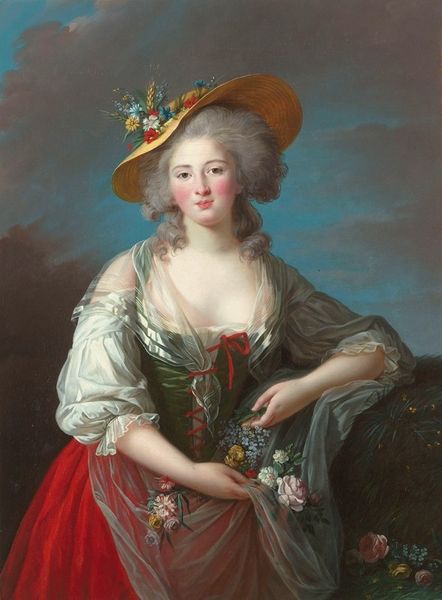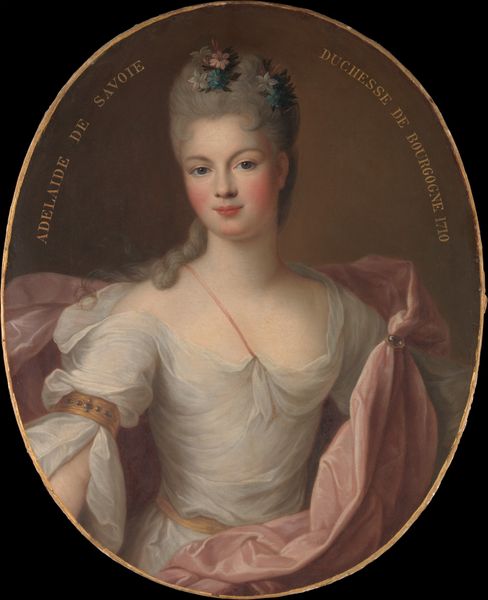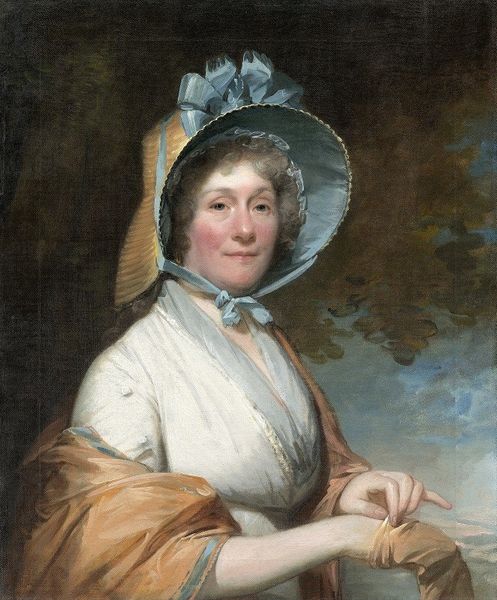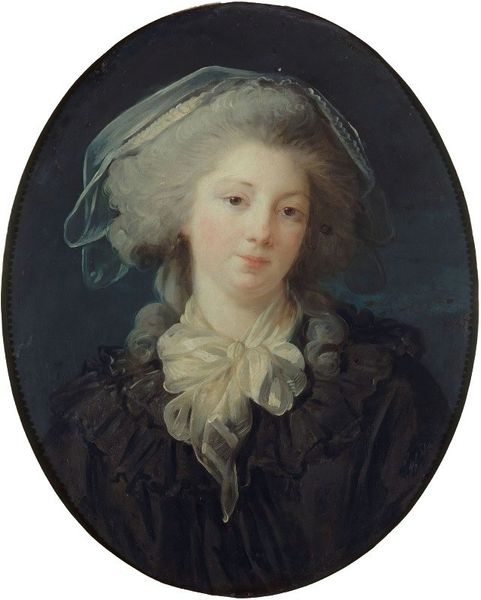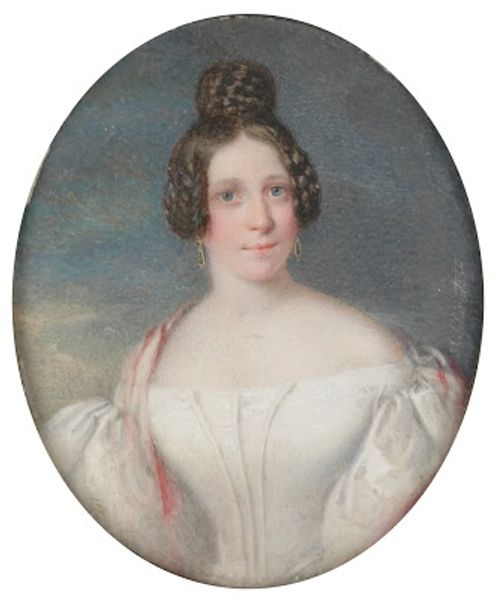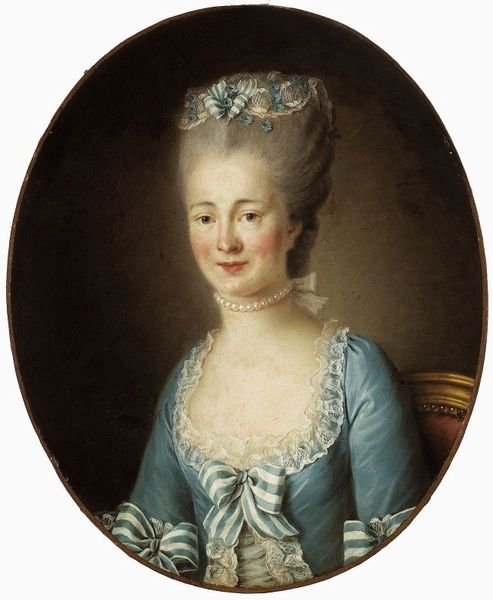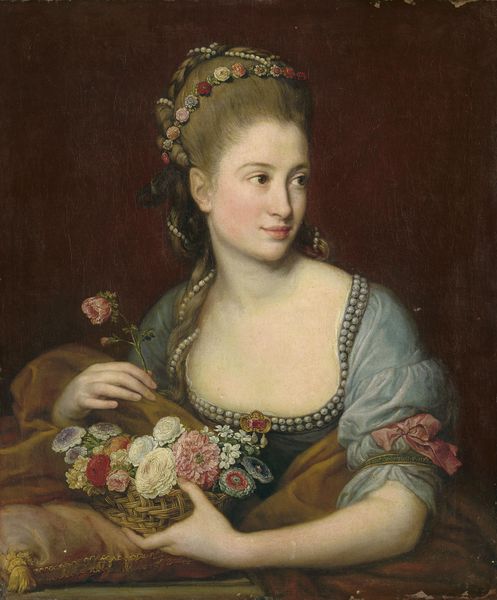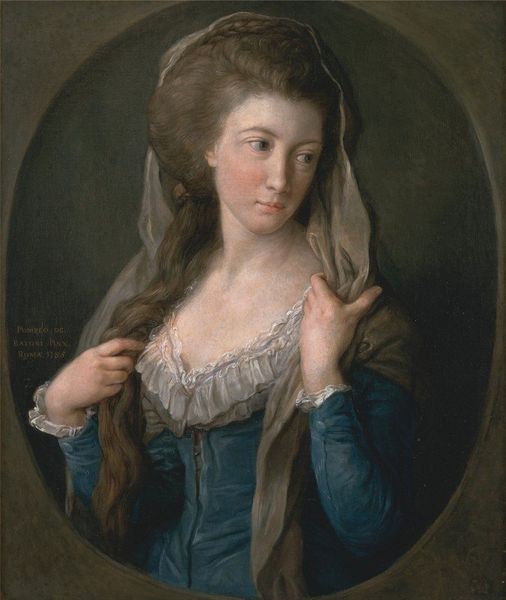
painting, oil-paint
#
portrait
#
painting
#
oil-paint
#
romanticism
#
academic-art
Copyright: Public domain
Curator: Barbara Krafft's oil painting presents us with "Portrait of Countess Marie Ernestine Esterhazy Starhemberg". What captures your eye initially? Editor: There's a quiet, contemplative air. Her soft gaze and the pastels create this really delicate, almost melancholic mood, wouldn't you agree? But that demure sweetness doesn't tell the whole story. There's that direct eye contact suggesting maybe she's not so compliant, perhaps. Curator: I’m fascinated by the materiality here – the sheen of the silk, the texture of the paper under her fingers, all rendered so precisely. I wonder about Krafft’s access to such luxurious materials and what constraints she worked under in depicting such an aristocratic subject. How do those details factor into a larger context, like artistic production within gendered social confines? Editor: Absolutely. Thinking about context, Countess Marie Ernestine lived in a society that confined women largely to the domestic sphere, yet held aristocratic women to specific political performativity. Her jewels indicate power but the fact that she holds correspondence suggests the private sphere. Even in a staged portrait like this, we are compelled to consider the limitations and, perhaps, rebellions of gendered power dynamics. How do these dynamics affect how we assess craft? Curator: Well, it brings questions about authenticity of self. The countess' clothing has the feel and fit that the artist intended for its subject. Krafft’s ability to faithfully capture these textures points to intense skill but also suggests the economics inherent to Academic art. I am drawn to explore Krafft's labour itself, because these things—choice of clothing, angle of her pose—reflect not just artistic license but also potentially Countess Marie Ernestine's control over her presentation. She would know that women after her would perceive her based on presentation of style. Editor: That negotiation is what I find particularly fascinating! Academic art, here through the lens of gender and class, can become a powerful source. But, speaking to material reality again, thinking about the labor that went into her wardrobe is important here. Was Krafft really trying to subvert norms, or perhaps did she just see her portrait as part of the commercial market for painting that she, a woman, could profit from? What impact did access to these economic opportunities play on female visibility during this era? Curator: I think your skepticism offers an insightful lens onto labor relations. The questions of exploitation and privilege surrounding female authorship become paramount, prompting us to investigate Krafft’s working conditions. Did she also gain economic advantages over others simply from class privilege alone? Editor: Exactly! It layers the narrative, revealing not just a portrait of a woman but the intersecting stories of class, gender, artistic labour, and access during that period. It moves the image out of the confines of mere aesthetics and connects it to real lived experiences. Curator: Precisely. These multiple perspectives truly enrich our understanding, connecting craft to identity, and making even an image such as this surprisingly resonant today. Editor: Absolutely, forcing us to look closer, question everything, and find deeper meanings in the most unassuming details.
Comments
No comments
Be the first to comment and join the conversation on the ultimate creative platform.
